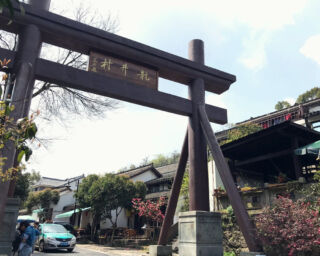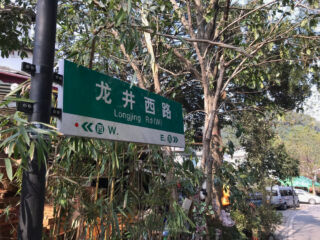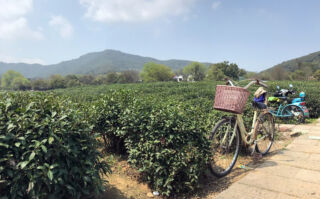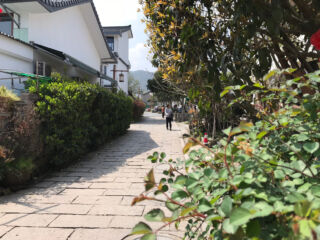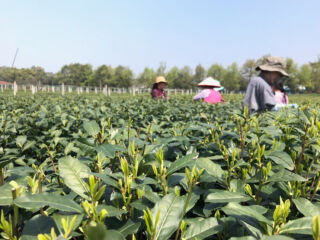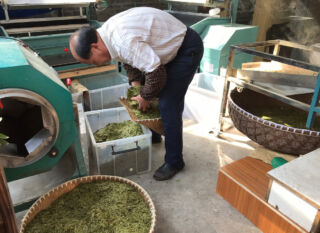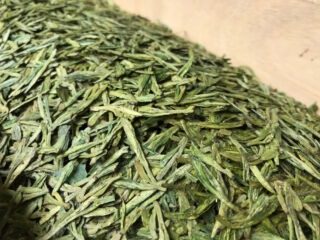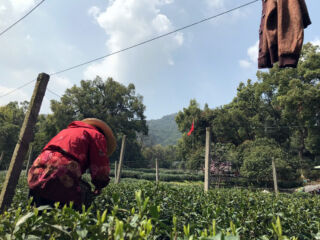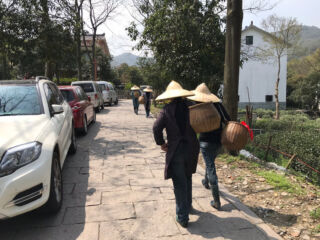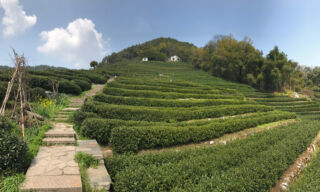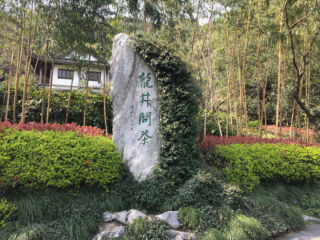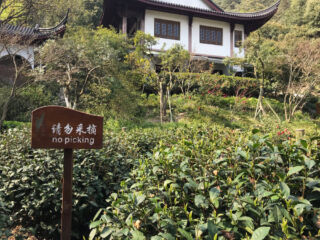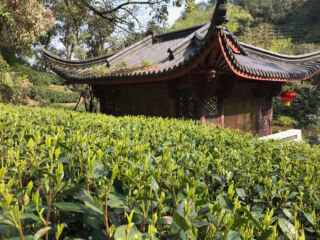Exploring the Famous Longjing Tea Village
Longjing or Dragon Well is a small village up in the hills just west of Hangzhou’s West Lake. This is the place where the most famous tea in China comes from. Every spring when the tea bushes wake up from their winter sleep and start budding, millions of enthusiasts clamor for a taste of this very special tea.

So, What is Longjing Tea?
Legend from during the Qing dynasty has it that dragons lived in a well at Longjing Village and if you look deep into the water you can see them swirling about. In Chinese culture, dragons are a big deal and symbolize long life and fortune. Tea produced in the area takes the name Longjing Tea or Dragonwell in English.
Longing was given special status when the Qianlong emperor visited the Hu Gong Temple at Lion Peak Mountain and was given a cup of the tea. He liked it so much that he claimed 18 of the tea bushes for himself and gave them imperial status. These bushes are still there and today the tea from them is auctioned off at prices per gram greater than gold.

In early spring around March 20th the first flush or pickings of tea buds begins. This first flush is by far the most prized and sought after therefore it is also very difficult to acquire and very expensive. For good quality tea you can expect to spend at least 3000 Yuan per 1/2 kilogram.
The tea buds are picked until Tomb-Sweeping Day then after that it is considered of slightly lower grade. Although this second picking is still Longjing tea it is slightly less in demand and maybe you can find it at reasonable prices.
Longjing tea is a green tea and during processing it is roasted a little bit to dry it and impart the signature chestnut aroma. The favored preparation is to add about 3-5-grams to a tall, clear glass and infuse with 85-degree Celsius water. Good tea should have a nice sweet taste and not bitter.
How is Longjing Tea Made?
The first step of course is picking the tea. In Spring sometime around March 20th and up until the Tomb Sweeping holiday is known as the “first flush”. First flush consists only of the tea bud, not the leaves and is graded as superior and of course is the most expensive. After the first flush there are like four more harvests which include leaves and are very good Longjing tea and more easy to find.
After picking, the next steps are to pluck the stems off the buds and sort for grading purposes. Not all the tea goes though this step as it is mainly for those that will be sold as superior grade and is very expensive due to the extra labor and effort.

The fresh leaves are withered in the open air for a couple of hours reducing their water content and allowing some oxidation to occur within the leaves.

After withering the tea is either fully pan dried and fried (expensive) or the process is automated somewhat using a specialized machine (affordable). This step reduces the moister content even more and flattens the leaves into their iconic elongated shape.


Pan frying is the last step to process the tea and it gives Longjing that scintillating chestnut aroma. When walking though the village the smell is intoxicating.

Finally, have a glass of fresh Longjing Tea accompanied by Longjing Fried Shrimps!

How Do You Get There?
Longjing Village is in the hills to the west of West Lake, Hangzhou. It’s pretty famous so getting there should be as easy as telling the taxi driver, “Take me to Longjing Village“.
Here is what I did for my day trip:
08:30 Train from Shanghai Hongqiao station to Hangzhou East station
10:15 At Hangzhou station, metro line 1 is downstairs. Take it to Longxiang Bridge 龙翔桥 station. Go out exit C-1 and turn right. West Lake is about one block where you can have a break and get a snack.
11:00 Take a taxi to the China National Tea Museum. Click here to download a brochure.
11:30 Explore the museum then frolic in the tea fields outside.
12:30 Outside the museum find the bus stop to catch bus number 27 or 87 going to Longjing Village.
To see the famous garden and tea bushes find Hugong Temple 胡公庙 at the northwest end of the village.


